All About Soccer: Almost Everything You Need To Know
- Last Updated -
ALL ABOUT SOCCER!
Soccer, also referred to as football outside of North America, holds the title for the most widely played sport globally. If you’re curious about the game’s gameplay, players, or any other related queries, you’ll find all the answers right here.
What Is Soccer?
Soccer, also known as Association Football, is a popular team sport played on a field by two teams of eleven players each. One player is designated as the goalkeeper while the remaining ten players are outfield players who may specialize in attacking, defending, or both.
Although players are typically categorized as defenders, midfielders, and forwards, there are no strict position restrictions, and players may move freely across the entire field. While the sport is called soccer in North America, it is referred to as football in most other parts of the world.

What does a soccer ball look like?
A soccer ball is a spherical object that typically has a circumference of between 27-28 inches and weighs between 14 and 16 ounces. Its shape is round, and it is commonly made of leather or synthetic materials.
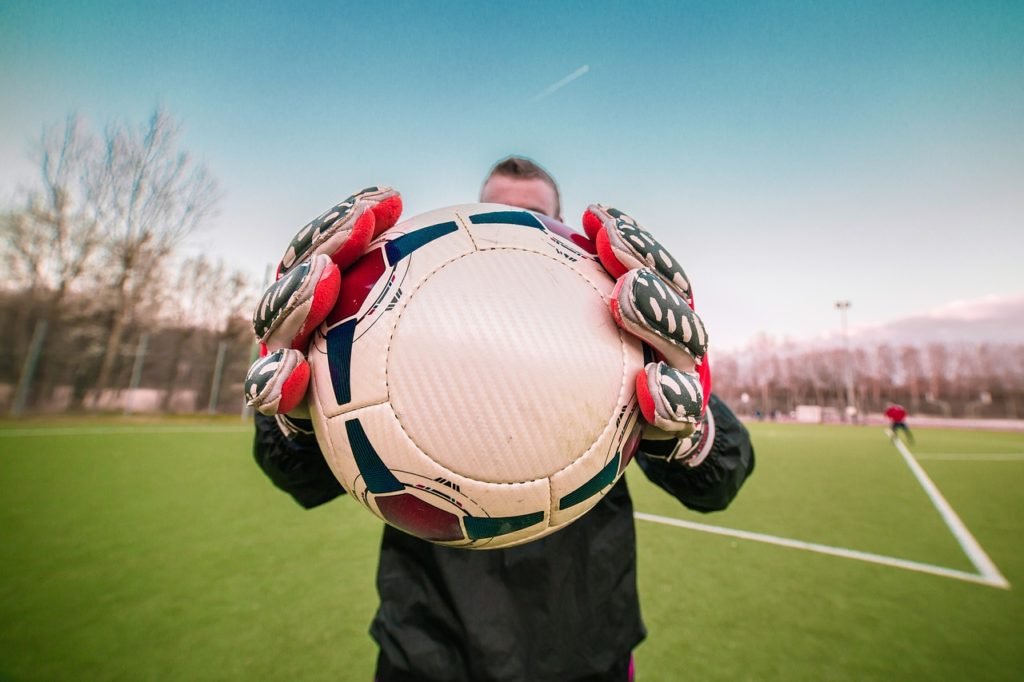
How many countries play soccer?
Soccer is widely regarded as the most popular sport in the world, with millions of people playing it in over 200 countries. This beloved sport has a fascinating history, with its roots tracing back to ancient civilizations where it was played in various forms.
Today, soccer has become a global phenomenon, played by individuals of all ages and genders, and its popularity continues to grow. According to recent estimates, there are over 250 million soccer players worldwide, with varying skill levels ranging from amateur to professional.
Although soccer is played in countries around the world, it is particularly popular in Europe, Central and South America, and Africa. These regions have produced some of the world’s most talented soccer players and national teams, and their leagues and tournaments are some of the most watched and competitive.
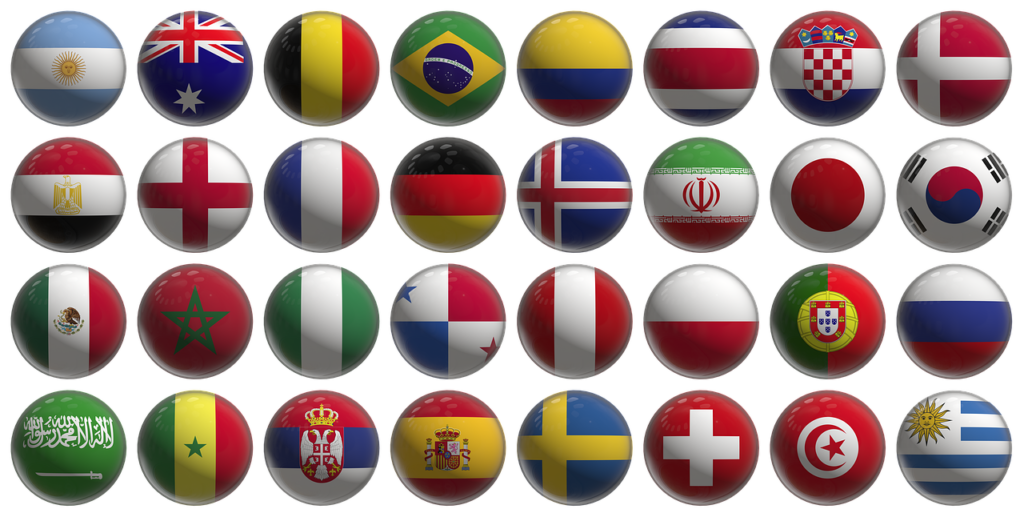
What does a soccer pitch look like?
A soccer match takes place on a rectangular field known as a pitch, which features a goal at each end. The size of the pitch for adult international matches typically ranges from 110 to 120 yards in length and 70 to 80 yards in width.
The goal lines are situated at either end of the pitch, while the touchlines run perpendicular to them. These markings define the playing area and ensure that the ball remains in play during the game.
Most soccer pitches have a grass playing surface, which requires careful maintenance and upkeep to ensure that it is of a suitable quality for gameplay. Although artificial surfaces are used in some professional settings, they are relatively uncommon due to their impact on gameplay and player safety. Overall, the appearance and dimensions of a soccer pitch may vary depending on the level of play and the location, but the game remains fundamentally the same regardless of where it is played.

What is the aim of soccer?
The primary objective of soccer is to advance the ball up the field and into the opponent’s goal, past the goal line. A typical soccer game lasts for 90 minutes, which is split into two 45-minute halves.
The goal consists of two vertical posts and a horizontal crossbar, located in the center of the goal line. A net is usually attached to the posts and crossbar in competitive games to stop the ball after it has crossed the goal line.
Any player from a team of 11 players on the field can score a goal, which adds one point to their team’s total. If an opposing player accidentally sends the ball into their own goal, a point is awarded to the opposing team.
At the end of 90 minutes, the team with the highest number of goals is declared the winner of the game. However, if the scoreline is tied at the end of regular time, additional 30 minutes of play, split into two 15-minute halves, are played in domestic cup competitions and the knockout stages of international club and national team competitions. If the scores are still level after extra time, a penalty shootout takes place.
During a penalty shootout, five players from each team take turns to attempt to score. If the scores are still tied after the initial five rounds, sudden death rounds are played until there is a winner.
Does soccer have post-season play-offs?
Unlike many major sports in the United States and Canada, most domestic soccer leagues do not have a post-season play-off round. In most cases, the team that finishes at the top of the league table after all teams have played each other both at home and away, is declared the winner of the league and crowned champion.
In these league competitions, teams are awarded three points for a win and one point for a draw. Losing teams receive no points.
However, there are some domestic leagues that use playoffs to determine which teams are relegated from the league. For example, the Bundesliga in Germany uses playoffs to determine which teams will be demoted.
In contrast, the English Premier League has a playoff system that determines which team is promoted from the second division to the top flight. This promotes competition and ensures that the most deserving teams are promoted to the top tier of the league.

What are the rules of soccer?
Soccer is governed by a set of 17 rules, known as the Laws of the Game, which are established and enforced by the International Football Association Board (IFAB). These laws are intended to be applied universally, but may be slightly modified to accommodate factors such as age, gender, and disabilities.
The Laws of the Game ensure that matches are played fairly and consistently, and cover everything from the size and shape of the ball, to the number of players on the field, to the criteria for scoring goals. By following these laws, players, coaches, and officials can ensure that the game is played in a safe and fair manner.
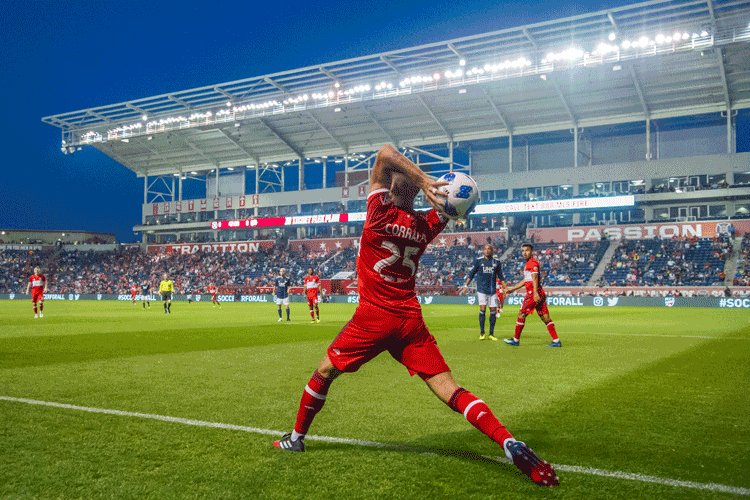
What is a foul in soccer?
Soccer has specific rules that dictate what constitutes a foul, which is an infringement of the laws of the game. Only the goalkeeper, who is a designated player on each team, is allowed to use their hands within their penalty area. The other ten players, known as outfield players, are prohibited from handling the ball with their hands or arms during gameplay. If an outfield player does so deliberately, it is considered a foul.
Other fouls include tripping or pushing an opponent, which can result in a direct free-kick if it occurs outside of the penalty area or a penalty if it occurs within the penalty box. A direct free-kick allows the attacking team to attempt a goal immediately after the referee signals for play to continue. If the foul is less serious, such as dangerous tackling, an indirect free-kick is given. In this case, at least one other member of the attacking team must touch the ball before a goal can be scored.

What is a penalty kick in soccer?
A penalty kick is awarded to the opposing team if a defending player commits a foul inside their own penalty area, which is also known as the 18-yard box. The goalkeeper is the only player allowed to touch the ball with their hands inside their own penalty area.
When a penalty is given, the ball is placed on the penalty spot, which is 12 yards away from the center of the goal. The penalty can be taken by any player from the attacking team, including the goalkeeper, while the opposing goalkeeper tries to prevent the ball from entering the goal. Only the taker and the defending goalkeeper are permitted inside the penalty area during the taking of the penalty kick.
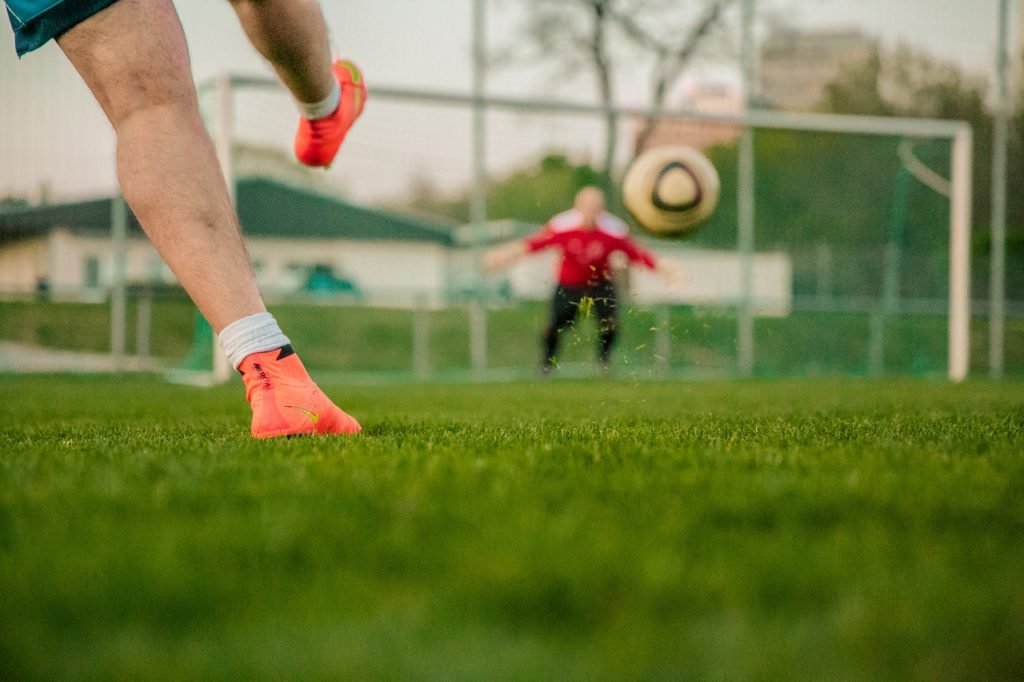
What happens when the ball goes out of play in soccer?
If the ball goes out of play in soccer, the outcome depends on which line it crosses. If it crosses the goal line but doesn’t go into the goal and was last touched by a defending player, a corner kick is given to the attacking team. The kick is taken from the corner nearest to where the ball went out. If the attacker touched the ball last and it went out, a goal-kick is awarded. The defending team takes the kick from the edge of the six-yard box and it is traditionally taken by the goalkeeper.
If the ball crosses the touchline, a throw-in is given to the team that did not touch the ball last. Outfield players can touch the ball with their hands only during throw-ins. They must use both hands to throw the ball back into play, with both feet on the ground. If they fail to do so, the other team is awarded the throw-in.
What do soccer players wear?
In soccer, players have specific equipment and clothing they wear during a game. The goalkeeper is distinguished from the other players and wears a different colored shirt, shorts, and socks. Meanwhile, all players on the same team wear the same strip composed of a shirt, shorts, and socks.
Players wear boots with cleats or studs to enhance their grip on the pitch. Shin guards are mandatory for all players, but headgear is not a required piece of basic equipment.
Goalkeepers wear gloves specifically designed to improve their grip on the ball. They are the only players who are allowed to use their hands and therefore require gloves to protect their hands during play.

What does a soccer referee do?
Before each soccer game, a referee is appointed to enforce the Laws of the Game. Alongside the referee, there are two assistant referees stationed on the touchlines, one in each half of the field. In professional games, a fourth official is also present.
The referee is responsible for penalizing any foul play by awarding a free-kick against the team of the offending player. If the foul takes place in the penalty area, a penalty kick is awarded to the attacking team, while an attacking foul in the penalty area results in a free-kick for the defending team.
Using a whistle, the referee signals to the players and is the only official allowed inside the playing area during the game.

What does a yellow card and a red card mean in soccer?
In soccer, there is no limit on how many fouls a player can commit, unlike in basketball, and there is no penalty box like in ice hockey.
When a player commits a serious infringement, the referee can show them a yellow or red card. A yellow card is a warning, also known as a booking. If the same player commits another offense that the referee deems worthy of a second yellow card, they are then shown a red card.
If a player receives a red card, they must leave the pitch immediately. It’s possible for a player to be shown a red card without having first been shown a yellow card, if the rule infringement was serious enough.
If a goalkeeper is sent off, a substitute goalkeeper can replace them, but the team must sacrifice an outfield player. As a result, the team will play with 10 players.
A team can have up to four players sent off and still continue the match. However, if a team is reduced to fewer than seven players, referees are instructed to stop the match prematurely.
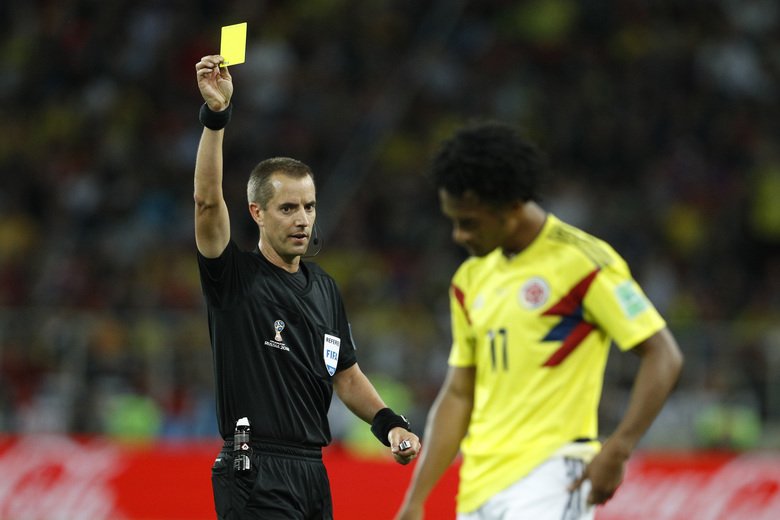
What is VAR?
Video Assistant Referees (VAR) have been introduced in recent soccer seasons to provide further assistance to the referees. Previously, referees did not have the luxury of using television replays to make decisions. However, with VAR, the referee can now rely on one or two colleagues, usually offsite, who review four specific situations: cases of mistaken identity for yellow/red cards, potential infringements in the build-up to a goal (fouls or offside), direct red card decisions, and penalty decisions.
Goalline technology is another technological advancement in soccer that helps referees decide if a goal has been scored or not. The system alerts the referees if the ball has completely crossed the goal line for a goal to be awarded.
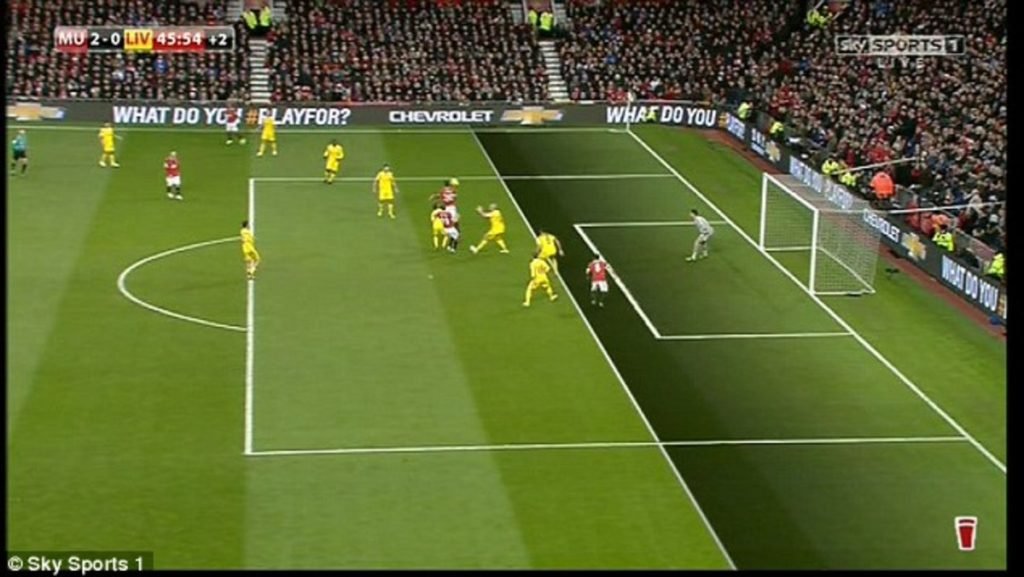
How many substitutes can be used in soccer?
In soccer, the number of substitutes that can be used varies depending on the competition rules. In professional games, a team typically names seven substitutes, with one being a goalkeeper, to sit on the bench at the start of the match. The exact number of players allowed in the matchday squad is also determined by the competition rules.
During the 90-minute duration of the game, only three substitutions are permitted, regardless of injuries. However, if the game extends to extra time, most competitions allow a fourth substitution to be made. The reasons for substitution usually include injury, fatigue, or a change in tactics.
Who controls soccer?
Football, also known as soccer in some countries, is governed at a global level by FIFA, the International Federation of Football Associations, based in Switzerland [1]. FIFA oversees international competition among the national associations of various countries. It also structures the entire FIFA organization, which comprises six regional confederations. These confederations include the Union of European Football Associations (UEFA), the Confederation of African Football (CAF), the Asian Football Confederation (AFC), the Confederation of North, Central American and Caribbean Association Football (CONCACAF), the Oceania Football Confederation (OFC), and the South American Football Confederation (CONMEBOL) [4].
Each country has its own national football association that organizes competitions between clubs associated with them. For instance, the English Football Association in England, commonly known as the FA, or US Soccer in the USA [1]. These national associations also organize national team competitions such as the FIFA World Cup.
Each regional confederation organizes competitions between clubs and national teams. The most renowned and lucrative club competition in the world is the UEFA Champions League, organized by the UEFA, featuring the European teams that have finished highest in their respective national leagues. UEFA also organizes the UEFA EURO, a European championship held every four years, which features national teams that have won through in the qualifying process [2].
In summary, while FIFA serves as the global governing body for football, each country has its own national football association that organizes competitions at the national level. Regional confederations organize competitions at the regional level and also oversee the participation of national teams in regional and global competitions.
During the 90-minute duration of the game, only three substitutions are permitted, regardless of injuries. However, if the game extends to extra time, most competitions allow a fourth substitution to be made. The reasons for substitution usually include injury, fatigue, or a change in tactics.
What is the soccer World Cup?
The soccer World Cup is a quadrennial tournament organized by the Fédération Internationale de Football Association (FIFA) [1]. It is open to national teams from around the world and is considered the most prestigious tournament in international soccer [2].
The first competition for the cup was organized in 1930 and won by Uruguay. Since then, it has been held every four years except during World War II [1]. The competition consists of international sectional tournaments leading to a final elimination event made up of 32 national teams [1]. However, the number of teams will increase to 48 for the 2026 competition to be held in the USA, Canada and Mexico [1].
The World Cup is the most-watched sporting event on the planet. In the 2006 tournament held in Germany, cumulative viewing figures reached over 26 billion, while more than 715 million people, which is one-ninth of the planet’s population, watched Italy beat France in the final at Berlin’s Olympiastadion [2].
In summary, the soccer World Cup is a major international tournament organized by FIFA that is open to national teams from around the world. It is held every four years, and the most recent competition was contested by 32 teams, though this will increase to 48 for the 2026 tournament. The World Cup is the most prestigious soccer tournament in the world and is also the most-watched sporting event globally.

The Historical Dominance of Brazilian Soccer in the World Cup
Introduction: The Beautiful Game's Grandest Stage The World Cup, a grand tournament...
Read MoreHow To Be A Good Soccer Parent! A Guide to Sideline Etiquette
What Makes A Good Soccer Parent? As a soccer parent, you have...
Read More

















